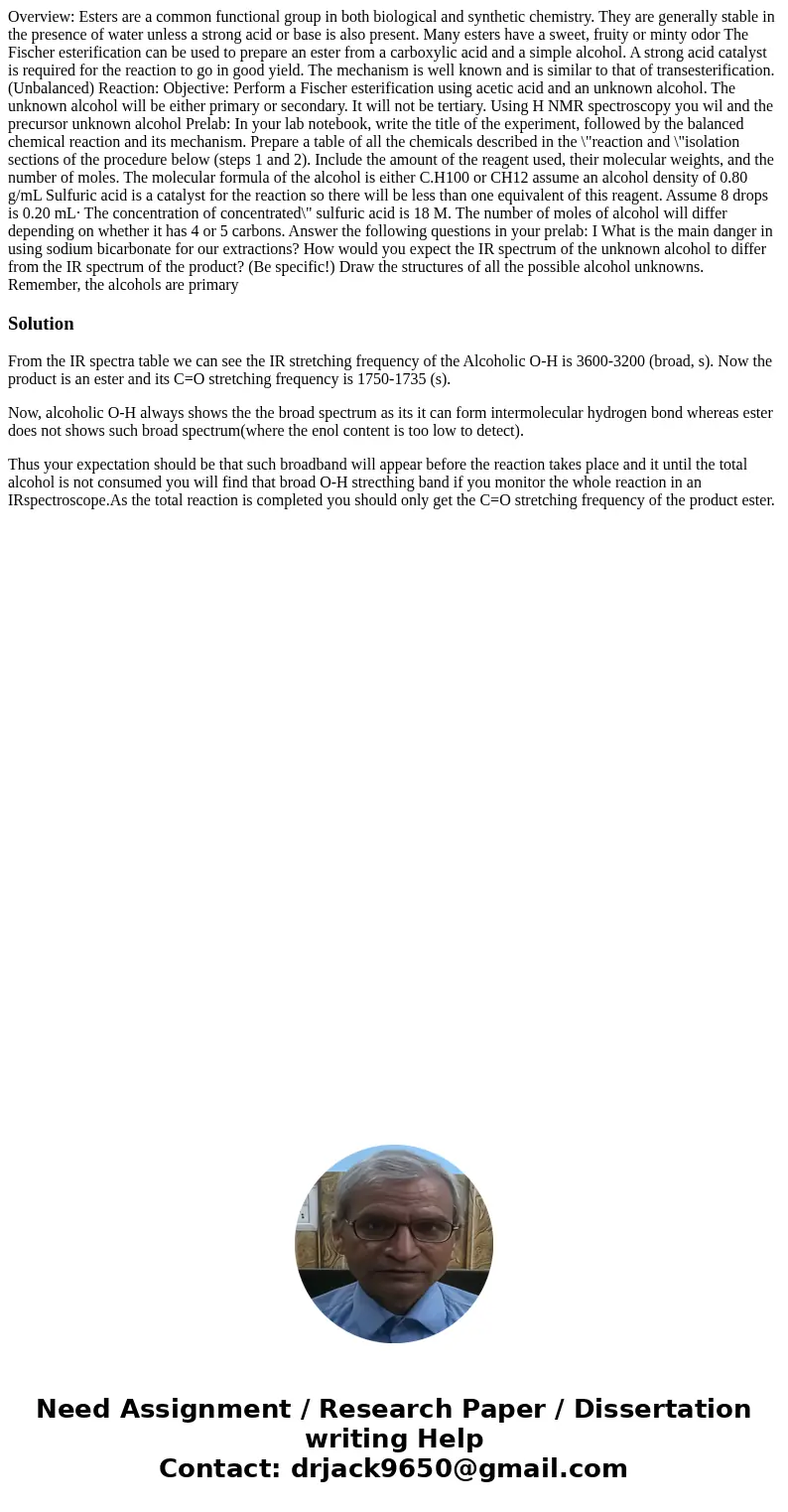Overview Esters are a common functional group in both biolog
Overview: Esters are a common functional group in both biological and synthetic chemistry. They are generally stable in the presence of water unless a strong acid or base is also present. Many esters have a sweet, fruity or minty odor The Fischer esterification can be used to prepare an ester from a carboxylic acid and a simple alcohol. A strong acid catalyst is required for the reaction to go in good yield. The mechanism is well known and is similar to that of transesterification. (Unbalanced) Reaction: Objective: Perform a Fischer esterification using acetic acid and an unknown alcohol. The unknown alcohol will be either primary or secondary. It will not be tertiary. Using H NMR spectroscopy you wil and the precursor unknown alcohol Prelab: In your lab notebook, write the title of the experiment, followed by the balanced chemical reaction and its mechanism. Prepare a table of all the chemicals described in the \"reaction and \"isolation sections of the procedure below (steps 1 and 2). Include the amount of the reagent used, their molecular weights, and the number of moles. The molecular formula of the alcohol is either C.H100 or CH12 assume an alcohol density of 0.80 g/mL Sulfuric acid is a catalyst for the reaction so there will be less than one equivalent of this reagent. Assume 8 drops is 0.20 mL· The concentration of concentrated\" sulfuric acid is 18 M. The number of moles of alcohol will differ depending on whether it has 4 or 5 carbons. Answer the following questions in your prelab: I What is the main danger in using sodium bicarbonate for our extractions? How would you expect the IR spectrum of the unknown alcohol to differ from the IR spectrum of the product? (Be specific!) Draw the structures of all the possible alcohol unknowns. Remember, the alcohols are primary 
Solution
From the IR spectra table we can see the IR stretching frequency of the Alcoholic O-H is 3600-3200 (broad, s). Now the product is an ester and its C=O stretching frequency is 1750-1735 (s).
Now, alcoholic O-H always shows the the broad spectrum as its it can form intermolecular hydrogen bond whereas ester does not shows such broad spectrum(where the enol content is too low to detect).
Thus your expectation should be that such broadband will appear before the reaction takes place and it until the total alcohol is not consumed you will find that broad O-H strecthing band if you monitor the whole reaction in an IRspectroscope.As the total reaction is completed you should only get the C=O stretching frequency of the product ester.

 Homework Sourse
Homework Sourse